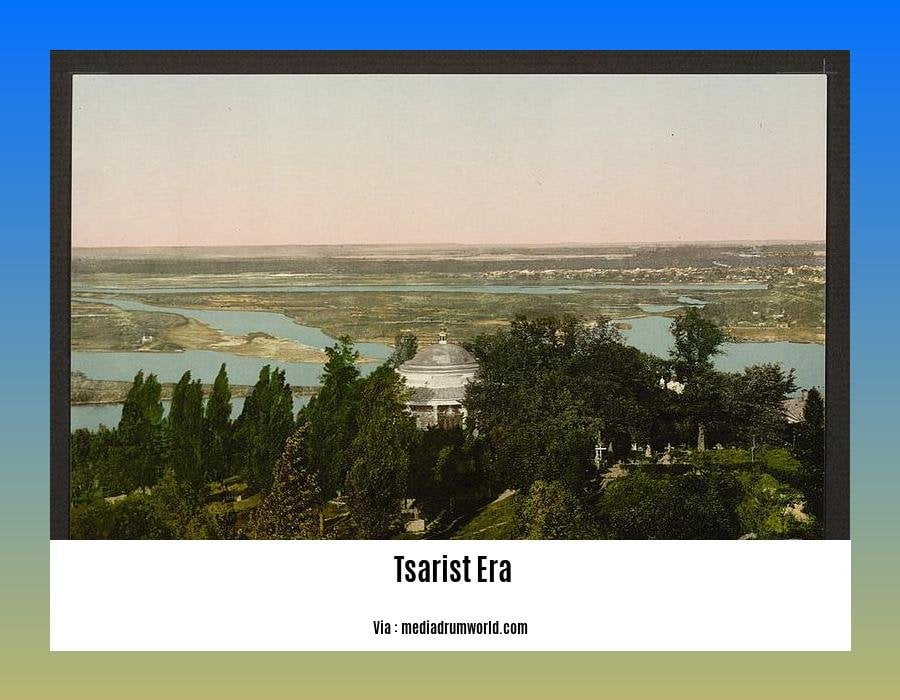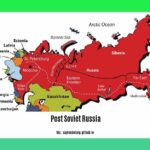Embark on a historical journey through [The Political Landscape of the Tsarist Era: A Historical Examination]. Delve into the intricate web of power dynamics, social hierarchies, and geopolitical forces that shaped the Russian Empire during this pivotal period.
Key Takeaways:
- The Tsardom of Russia was also known as the Tsardom of Muscovy.
- It existed from 1547 to 1721.
- It expanded rapidly during that time.
- It included the reign of Ivan IV, the transition from the Rurik to Romanov dynasties, and the conquest of Siberia.
- Peter the Great transformed it into the Russian Empire in 1721.
Tsarist Era

The Tsarist era was a period in Russian history marked by the rule of tsars and the establishment of the Tsarist regime. The tsars, or emperors, held absolute power and were at the center of a highly centralized political system.
Political Characteristics
- Autocratic rule by the tsar, who held supreme authority
- Lack of a formal constitution or separation of powers
- A vast bureaucracy that carried out the tsar’s policies
- A powerful secret police that suppressed dissent
- Limited political participation by the population
Role of the Tsar
The tsar was the absolute ruler of Russia. They possessed the following powers:
- Appointment and dismissal of government officials
- Control of the military and foreign policy
- Issuance of laws and decrees
- Administration of justice
- Patronage of the arts and education
Social Structure
The Tsarist era was characterized by a rigid social hierarchy, with the tsar at the top followed by the nobility, clergy, merchants, and peasants. Peasants, who made up the vast majority of the population, were bound to the land and subject to oppressive laws.
Economic System
The Russian economy during the Tsarist era was primarily based on agriculture. The government also played a significant role in industrial development, fostering a “command economy” where the state controlled key sectors.
Cultural and Intellectual Life
Despite the autocratic nature of the Tsarist regime, significant cultural and intellectual developments occurred during this period. Russian literature, music, and art flourished, and there were debates about political and social reforms.
If you wish to travel back in time and explore the history of Russia, from its humble beginnings to its current state as a global superpower, then this article is for you.
Curious about the formation of the Soviet Union? This article tells the chronicle of how this vast nation came into being and its significant impact on global politics.
Want to know more about post-Soviet Russia and its transition to a new era post the fall of the Soviet Union? Read this article to understand the challenges, triumphs, and complexities of this period.
Economic Policies and Industrialization

In the late 19th and early 20th centuries, Tsarist Russia’s economy was primarily agricultural.
One of the key characteristics of the Tsarist era was its focus on industrialization. This process of rapid economic growth and technological advancement was seen as a way to modernize the Russian economy and make it more competitive internationally.
The government implemented a series of economic policies designed to promote industrialization. These policies included:
- Providing subsidies and tax breaks to businesses
- Investing in infrastructure projects such as railroads and factories
- Promoting education and training to meet the growing demand for skilled workers
- Establishing protective tariffs to shield domestic industries from foreign competition
Industrialization had a significant impact on Russian society. It led to the growth of new industries and cities. It also created a new class of industrial workers who played a key role in the development of the Russian economy.
Key Takeaways:
- Tsarist Russia’s economy was primarily agricultural in the late 19th and early 20th centuries.
- Industrialization occurred rapidly in Soviet Russia between 1928-1940.
- The Russian Industrial Society, established in 1867, played a significant role in promoting industrialization and fostering government support.
Citations:
– Yale Department of Economics
– Cambridge University Press & Assessment
Cultural Achievements and Intellectual Currents
Beyond the political intricacies, Tsarist Russia left an indelible mark on the world through its remarkable Cultural Achievements and Intellectual Currents.
Flourishing of the Arts
Tsarist Russia witnessed an artistic renaissance, particularly in the 19th century. The Wanderers movement celebrated the beauty and realism of everyday life, while the Mir Iskusstva (World of Art) championed a return to traditional Russian aesthetics. Artists like Vasili Vereshchagin and Repin captured the raw emotions of the era on canvas.
Literary Greatness
Russian literature soared to new heights, reflecting the social and political turmoil of the time. Pushkin, known as the “Father of Russian Literature,” penned epic poems and historical novels. Tolstoy and Dostoevsky explored the human condition and the complexities of Russian society through their profound works.
Intellectual Awakening
The Tsarist era also fostered a vibrant intellectual climate. Alexander Herzen and Nikolai Chernyshevsky advocated for social reform and revolution. Scientists like Nikolai Lobachevsky and Dmitri Mendeleev made significant contributions to mathematics and chemistry.
Key Takeaways:
- Tsarist Russia’s Cultural Achievements and Intellectual Currents enriched the world.
- Artistic movements like the Wanderers and Mir Iskusstva captured the essence of Russian life.
- Literary giants like Pushkin, Tolstoy, and Dostoevsky left an enduring legacy.
- Intellectuals sparked social and political change, pushing the boundaries of thought.
Most Relevant URL Sources:
- Tsarist Russia, 1855-1917
- The Good, the Great and the Terrible Tsars and Tsaritsas of Russia
Foreign Policy and Expansionism
Tsarist Russia pursued an aggressive foreign policy driven by a thirst for expansionism. A combination of factors fueled this expansionist agenda:
- Geography: Russia’s vast territory and access to multiple seas offered both opportunities and challenges for territorial growth.
- Regime Type: The autocratic nature of the Tsarist regime allowed for swift and decisive decision-making in foreign affairs.
- International System: The 19th-century European power balance system encouraged competition and rivalry among nations, creating a fertile ground for expansionism.
- Ideology: Russian nationalism and Pan-Slavism (the idea of unifying Slavic peoples) provided ideological justification for territorial expansion.
Russia’s insecurity played a significant role in shaping its foreign policy. Surrounded by potential enemies, the Russian state saw expansion as a means of securing its borders and asserting its power.
Key Takeaways:
- Tsarist Russia’s foreign policy was deeply intertwined with its expansionist ambitions.
- Geographical, political, international, and ideological factors influenced Russia’s aggressive foreign policy.
- Russia’s perceived vulnerability contributed to its expansionist drive.
Most Relevant URL Sources:
- Oxford Research Encyclopedia of Social Work: Russia and Foreign Policy
- RAND Corporation: Russian Foreign Policy in Historical and Current Context: A Reassessment
















